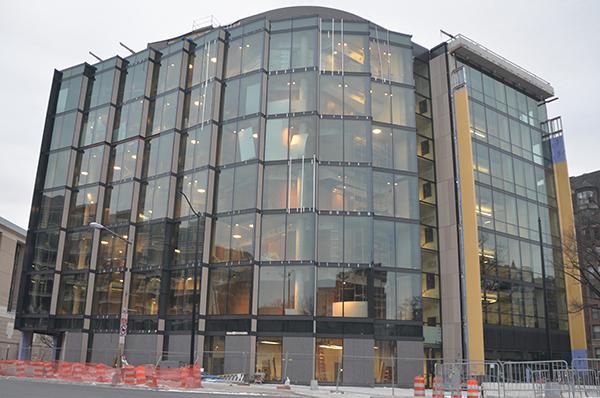The University has only raised 14 percent of the money needed to pay for the $75 million public health building opening next month – another financial setback during a campus construction boom.
Donors have given only $3.5 million to the glassy Washington Circle building, the first permanent home for the School of Public Health and Health Services, which is one of GW’s research powerhouses. GW is asking the fundraising office to cover $25 million of the total costs, with the rest coming from debt and government research subsidies.
Once the doors open in March, it will be much tougher to bring in donations to cover construction costs, Vice President for Development and Alumni Relations Mike Morsberger said.
Still, he said he hopes that the growing prominence of the school, ranked No. 16 by U.S. News & World Report, will help sell the construction to donors even years after its completion.
“It’s so high-profile on Washington Circle that regardless of hitting that building capital target by the opening, I have a pretty good feeling that we’re going to meet that goal in the course of the next few years,” Morsberger said.
Morsberger said last week that the University would announce a few large gifts sometime this semester. He did not specify what projects those likely multimillion-dollar donations would help pay for.
Bob Carter, chair of the Board of Directors for the Association of Fundraising Professionals, said it may be too late for a big fundraising push.
“There are two times to ideally raise money for buildings – before you build and as you build. It becomes increasingly difficult after the floors are dirty,” Carter said.
The University has spent about a half-billion dollars on campus construction over the last six years – piling on debt and testing GW’s fundraising prowess.

Over the past seven months, gifts to help pay for the $275 million Science and Engineering Hall have also slowed, generating a fraction of the money it needs from outside sources.
Administrators had also hoped new academic buildings would continue to pump in more donations, a financial source that has historically lacked at GW but has increased under University President Steven Knapp.
If GW can’t pull in enough to finance the building’s costs, it will be tougher to pay off the debt it used to pay for the costs up front. Overall, the University has a large debt load of about $1.4 billion, topping over its endowment.
The seven-floor building is the school’s first centralized home since the college opened 17 years ago. Unifying the school’s seven different departments, administrators hope that the building will create a sense of community.
Alumni giving rates, which lag behind peer schools, have gone up at the public health school, though Dean Lynn Goldman declined to comment on specific figures.
Morsberger attributed the growing support to Goldman’s popularity as she has escalated the school’s research profile since arriving in 2010. He added that her leadership has driven the “rapid ascent of the school of public health and its national recognition as a real player.”
“That’s not gone unnoticed, not only by our alumni and friends – those closest to us – but those we haven’t previously had a relationship with. That’s just the kind of magnet that you want,” Morsberger said.
The school now has seen the most rapid research growth of any of GW’s schools, coming at a time when the federal government has slashed giving due to budget cuts.
Goldman, who is required by GW to spend at least 50 percent of her time fundraising, said she expects the growing number of alumni donations to continue.
“As our alumni, donors and friends experience and witness the growth that the school has enjoyed these past couple of years, alumni in particular are more interested in connecting with their alma mater,” she said.
Goldman added that she hopes the school will become a hotspot in D.C. for “not only alumni, students, donors and faculty, but also public health leaders and thinkers, elected officials, media and others, thereby facilitating further critical achievements in public health.”







